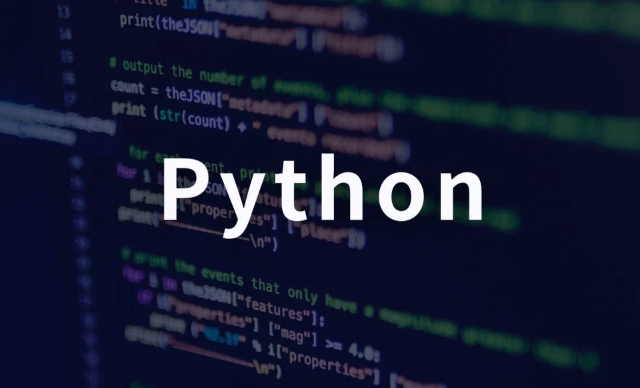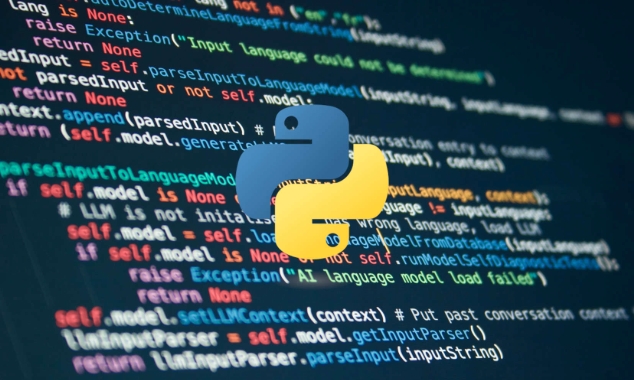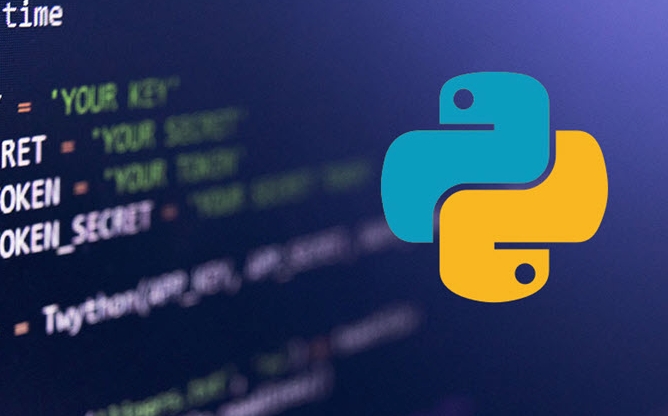How to handle API errors and status codes in Python
Jul 09, 2025 am 01:44 AMHandling API errors and status codes can be achieved in Python by understanding common status codes, using the requests library to handle exceptions, catch network errors, and record logs. First, you should be familiar with status codes such as 200 OK, 400 Bad Request, 401 Unauthorized, 403 Forbidden, 404 Not Found, and 500 Internal Server Error to quickly locate problems. Secondly, you can use the status_code attribute or raise_for_status() method of the requests library to determine whether the request is successful. 1. Use try-except to catch exception types such as HTTPError, Timeout and ConnectionError and handle them separately. 2. Set timeout to prevent the program from being stuck and consider introducing a retry mechanism to improve reliability. 3. Use the logging module to record error information and preserve the context for debugging. Through these methods, the robustness of the program can be effectively improved and the investigation process can be simplified.

Handling API errors and status codes is not actually complicated in Python, but it is easy to ignore details. Especially when calling third-party services or building your own web applications, a good error handling mechanism can not only improve the robustness of the program, but also help you quickly locate problems.

Below are some commonly used practices and suggestions in actual development.
Understand common HTTP status codes
Before writing code, it is necessary to have a basic understanding of common status codes. for example:

-
200 OK: The request was successful -
400 Bad Request: The request sent by the client is incorrect -
401 Unauthorized: Authentication is required -
403 Forbidden: The server refuses to execute the request -
404 Not Found: The resource does not exist -
500 Internal Server Error: An error occurred inside the server
After knowing this, you can quickly determine which layer the problem lies when processing the response.
Basic error handling methods using requests library
The most commonly used library in Python for initiating HTTP requests is requests . It provides some simple but practical ways to check if the request is successful.

import requests
response = requests.get('https://api.example.com/data')
if response.status_code == 200:
data = response.json()
else:
print(f"Request failed, status code: {response.status_code}") In addition to checking status_code , you can also use the response.raise_for_status() method to automatically throw exceptions:
try:
response = requests.get('https://api.example.com/data')
response.raise_for_status() # If not 2xx, HTTPError will be thrown
except requests.exceptions.HTTPError as err:
print(f"HTTP error occurred: {err}")This can avoid writing many if judgments manually.
Handle connection and timeout errors
In addition to the status code returned by the server, some errors occur at the network layer, such as connection failure, timeout, etc. These situations cannot be handled by checking status_code only.
You can use try-except to catch a wider range of exception types:
try:
response = requests.get('https://api.example.com/data', timeout=5)
response.raise_for_status()
except requests.exceptions.Timeout:
print("Request timed out, please check the network or try again")
except requests.exceptions.ConnectionError:
print("Cannot connect to the server, please check whether the network or URL is correct")
except requests.exceptions.HTTPError as err:
print(f"HTTP error: {err}")Here are a few key points to pay attention to:
- Set a reasonable
timeouttime to prevent the program from getting stuck - Differentiate different exception types and provide corresponding feedback
- In production environments, it is recommended to add a retry mechanism (such as using the
tenacitylibrary)
Logging and debugging information
If you are working on a long-term service or need to troubleshoot online problems, it is recommended to record the error message. You can save logs with the logging module:
import logging
logging.basicConfig(filename='api_errors.log', level=logging.ERROR)
try:
response = requests.get('https://api.example.com/data', timeout=5)
response.raise_for_status()
except Exception as e:
logging.error(f"API request failed: {e}, response content: {response.text if 'response' in locals() else 'no response'}")Doing so allows for the detailed error context to be preserved without affecting the user.
Basically that's it. The core of API error handling is "predicting in advance", "reasonable capture", and "clear feedback". Although it seems to be common operations, if one or two details are missed, the program may lapse or data loss.
The above is the detailed content of How to handle API errors and status codes in Python. For more information, please follow other related articles on the PHP Chinese website!

Hot AI Tools

Undress AI Tool
Undress images for free

Undresser.AI Undress
AI-powered app for creating realistic nude photos

AI Clothes Remover
Online AI tool for removing clothes from photos.

Clothoff.io
AI clothes remover

Video Face Swap
Swap faces in any video effortlessly with our completely free AI face swap tool!

Hot Article

Hot Tools

Notepad++7.3.1
Easy-to-use and free code editor

SublimeText3 Chinese version
Chinese version, very easy to use

Zend Studio 13.0.1
Powerful PHP integrated development environment

Dreamweaver CS6
Visual web development tools

SublimeText3 Mac version
God-level code editing software (SublimeText3)

Hot Topics
 Polymorphism in python classes
Jul 05, 2025 am 02:58 AM
Polymorphism in python classes
Jul 05, 2025 am 02:58 AM
Polymorphism is a core concept in Python object-oriented programming, referring to "one interface, multiple implementations", allowing for unified processing of different types of objects. 1. Polymorphism is implemented through method rewriting. Subclasses can redefine parent class methods. For example, the spoke() method of Animal class has different implementations in Dog and Cat subclasses. 2. The practical uses of polymorphism include simplifying the code structure and enhancing scalability, such as calling the draw() method uniformly in the graphical drawing program, or handling the common behavior of different characters in game development. 3. Python implementation polymorphism needs to satisfy: the parent class defines a method, and the child class overrides the method, but does not require inheritance of the same parent class. As long as the object implements the same method, this is called the "duck type". 4. Things to note include the maintenance
 2025 quantitative trading skills: Python's automatic brick-moving strategy, making a daily profit of 5% as stable as a dog!
Jul 03, 2025 am 10:27 AM
2025 quantitative trading skills: Python's automatic brick-moving strategy, making a daily profit of 5% as stable as a dog!
Jul 03, 2025 am 10:27 AM
The digital asset market attracts global attention with its high volatility. In this environment, how to steadily capture returns has become the goal pursued by countless participants. Quantitative trading, with its dependence on data and algorithm-driven characteristics, is becoming a powerful tool to deal with market challenges. Especially in 2025, this time node full of infinite possibilities is combined with the powerful programming language Python to build an automated "brick-moving" strategy, that is, to use the tiny price spreads between different trading platforms for arbitrage, which is considered a potential way to achieve efficient and stable profits.
 Understanding the Performance Differences Between Golang and Python for Web APIs
Jul 03, 2025 am 02:40 AM
Understanding the Performance Differences Between Golang and Python for Web APIs
Jul 03, 2025 am 02:40 AM
Golangofferssuperiorperformance,nativeconcurrencyviagoroutines,andefficientresourceusage,makingitidealforhigh-traffic,low-latencyAPIs;2.Python,whileslowerduetointerpretationandtheGIL,provideseasierdevelopment,arichecosystem,andisbettersuitedforI/O-bo
 Python `@classmethod` decorator explained
Jul 04, 2025 am 03:26 AM
Python `@classmethod` decorator explained
Jul 04, 2025 am 03:26 AM
A class method is a method defined in Python through the @classmethod decorator. Its first parameter is the class itself (cls), which is used to access or modify the class state. It can be called through a class or instance, which affects the entire class rather than a specific instance; for example, in the Person class, the show_count() method counts the number of objects created; when defining a class method, you need to use the @classmethod decorator and name the first parameter cls, such as the change_var(new_value) method to modify class variables; the class method is different from the instance method (self parameter) and static method (no automatic parameters), and is suitable for factory methods, alternative constructors, and management of class variables. Common uses include:
 Python Function Arguments and Parameters
Jul 04, 2025 am 03:26 AM
Python Function Arguments and Parameters
Jul 04, 2025 am 03:26 AM
Parameters are placeholders when defining a function, while arguments are specific values ??passed in when calling. 1. Position parameters need to be passed in order, and incorrect order will lead to errors in the result; 2. Keyword parameters are specified by parameter names, which can change the order and improve readability; 3. Default parameter values ??are assigned when defined to avoid duplicate code, but variable objects should be avoided as default values; 4. args and *kwargs can handle uncertain number of parameters and are suitable for general interfaces or decorators, but should be used with caution to maintain readability.
 Explain Python generators and iterators.
Jul 05, 2025 am 02:55 AM
Explain Python generators and iterators.
Jul 05, 2025 am 02:55 AM
Iterators are objects that implement __iter__() and __next__() methods. The generator is a simplified version of iterators, which automatically implement these methods through the yield keyword. 1. The iterator returns an element every time he calls next() and throws a StopIteration exception when there are no more elements. 2. The generator uses function definition to generate data on demand, saving memory and supporting infinite sequences. 3. Use iterators when processing existing sets, use a generator when dynamically generating big data or lazy evaluation, such as loading line by line when reading large files. Note: Iterable objects such as lists are not iterators. They need to be recreated after the iterator reaches its end, and the generator can only traverse it once.
 Describe Python garbage collection in Python.
Jul 03, 2025 am 02:07 AM
Describe Python garbage collection in Python.
Jul 03, 2025 am 02:07 AM
Python's garbage collection mechanism automatically manages memory through reference counting and periodic garbage collection. Its core method is reference counting, which immediately releases memory when the number of references of an object is zero; but it cannot handle circular references, so a garbage collection module (gc) is introduced to detect and clean the loop. Garbage collection is usually triggered when the reference count decreases during program operation, the allocation and release difference exceeds the threshold, or when gc.collect() is called manually. Users can turn off automatic recycling through gc.disable(), manually execute gc.collect(), and adjust thresholds to achieve control through gc.set_threshold(). Not all objects participate in loop recycling. If objects that do not contain references are processed by reference counting, it is built-in
 How does Python memory management work?
Jul 04, 2025 am 03:26 AM
How does Python memory management work?
Jul 04, 2025 am 03:26 AM
Pythonmanagesmemoryautomaticallyusingreferencecountingandagarbagecollector.Referencecountingtrackshowmanyvariablesrefertoanobject,andwhenthecountreacheszero,thememoryisfreed.However,itcannothandlecircularreferences,wheretwoobjectsrefertoeachotherbuta






